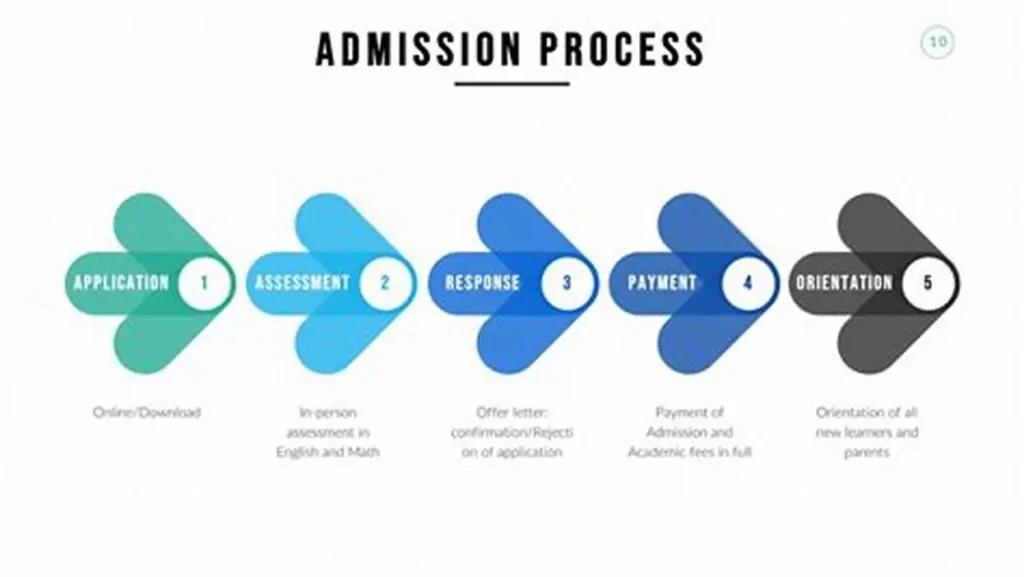With the increasing digitization of education, most universities have transitioned to an online application process for prospective students. This process streamlines admission, making it easier for applicants to submit their documents, track the status of their applications, and receive responses. In this guide, we will walk you through the general steps involved in applying to a university online.

Introduction to the Online Application Process
The online application process is designed to simplify the procedure for students applying to universities. Instead of filling out physical forms and mailing documents, students can now complete their applications via university websites or online application portals.
This guide will cover the common steps for completing an online university application, required documents, common mistakes to avoid, and tips for ensuring a successful application.
Overview of the University Online Application Process
| Step | Description |
|---|---|
| 1. Research Universities | Investigate universities and their programs to find the best fit for your goals. |
| 2. Create an Application Account | Sign up for an account on the university’s admission portal. |
| 3. Fill Out the Application Form | Enter personal details, educational background, and program preferences. |
| 4. Submit Required Documents | Upload transcripts, recommendation letters, statement of purpose, etc. |
| 5. Pay the Application Fee | Pay any required fee to submit your application. |
| 6. Submit the Application | Review and finalize your application before submitting it. |
| 7. Track Application Status | Monitor the status of your application through the portal. |
Step-by-Step Guide to Applying Online
1. Research Universities and Programs
Before beginning the application process, take time to research various universities, their programs, and admission requirements. Look at factors like location, tuition fees, campus life, program structure, and future career prospects. Check if the university offers any scholarships or financial aid that you might be eligible for.
2. Create an Application Account
Most universities require applicants to create an account on their admission portal. This allows you to start your application, save progress, and return to it later. The process usually requires basic personal information like your name, email address, and a password for your account.
3. Fill Out the Application Form
Once your account is set up, you will need to fill in various sections of the online application form. These sections typically include:
- Personal Information: Your name, contact details, and identification information.
- Educational Background: Your previous schools, grades, and any standardized test scores (SAT, GRE, etc.).
- Program Selection: Indicate the specific program or course you are applying to.
4. Submit Required Documents
Universities typically require supporting documents, including:
- Transcripts: Upload your high school or previous university transcripts.
- Recommendation Letters: Some universities require 2-3 recommendation letters from teachers or professionals.
- Statement of Purpose (SOP): A document explaining your academic interests and reasons for applying.
- Resume or Curriculum Vitae (CV): A detailed summary of your academic and professional background.
- Test Scores: If applicable, upload standardized test scores (GRE, TOEFL, IELTS, etc.).
5. Pay the Application Fee
After completing the application, you will need to pay an application fee, which can vary by university. Some universities offer fee waivers for eligible applicants, so check whether you qualify.
6. Submit the Application
Before submitting your application, review all the details carefully. Double-check the documents you’ve uploaded and ensure all sections of the form are complete. Once submitted, most universities do not allow you to make changes to your application.
7. Track Your Application Status
After submission, many universities offer tracking systems where you can check the status of your application. You may receive notifications regarding additional documents required or updates on your application review.
Documents Required for Online Applications
Below is a general list of documents you may need for your university application:
- Transcripts from high school or previous institutions.
- Test scores (e.g., SAT, ACT, GRE, GMAT, TOEFL, IELTS) if required.
- Personal statement or essay, which highlights your academic goals and reasons for applying.
- Letters of recommendation from teachers, counselors, or employers.
- Portfolio (if applicable) for creative programs such as design, architecture, or art.
- Resume/CV, outlining your achievements, experience, and extracurricular activities.
Ensure all documents are properly scanned and formatted (PDFs are often preferred).
Common Mistakes to Avoid
- Missing Deadlines: Always keep track of application deadlines, as late submissions are rarely accepted.
- Uploading Incorrect Documents: Double-check each document to ensure you’re submitting the correct files.
- Incomplete Forms: Ensure that all required fields on the application form are filled out before submission.
- Ignoring Word Limits: If your university specifies word limits for essays or personal statements, stick to them.
- Not Following Up: After submitting your application, check your email regularly for any requests from the university for additional information or documents.
Tips for a Successful Online Application
- Start Early: Give yourself plenty of time to gather documents, write your essays, and get recommendations.
- Proofread: Double-check all information, including spelling and grammar, before submitting your application.
- Be Honest: Provide accurate information, as universities can verify your credentials and background.
- Follow Guidelines: Ensure that you adhere to specific university instructions for document uploads and formatting.
- Reach Out for Help: If you have questions during the application process, contact the university’s admissions office for guidance.
Conclusion
Applying to a university online is a straightforward process when you are well-prepared. By following the steps outlined in this guide, you can ensure that your application is submitted accurately and on time. Remember, each university may have unique requirements, so always check the specific guidelines provided by the institutions you are applying to. Good luck with your university application!